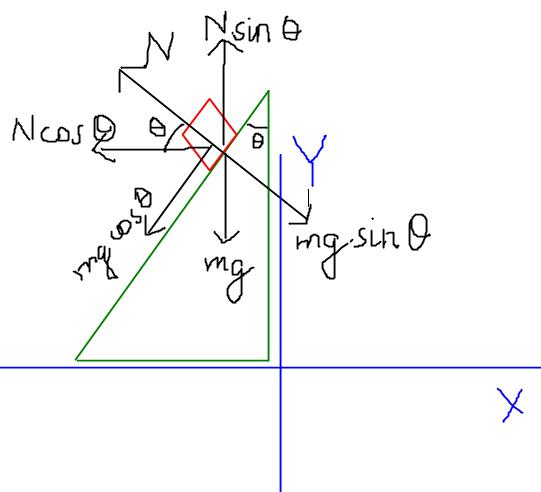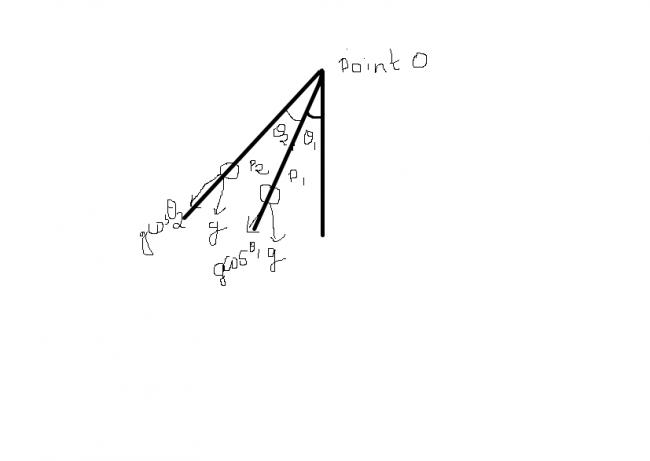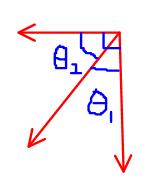and kalyan i dont know what hav u done.....what diagram hav u drawn.......???
2 particles start together from a pt. O and slide down straight smooth wires inclined at 30° and 60° to the vertical plane and on the same side of the vertical through O. The relative acceleration of second w.r.t the first is __________________.
-
UP 0 DOWN 0 0 5

5 Answers
The acc. of the two bodies are along different lines, so they cannot be directly subtracted........
From the figure,
mgsin@=N
Fx=Ncos@=mgsin@cos@
Fy=mg-Nsin@=mg(1-sin2@)=mgcos2@
In the given problem......
a1x=(g/2)sin2@=(g/2)sin60°
a1y=gcos2@=gcos230°
a2x=(g/2)sin2@=(g/2)sin120°
a2y=gcos2@=gcos260°
Therefore acc of second wtr first,
a=(a2x-a1x)i+(a2y-a1y)j
=(g/2)(sin120°-sin60°)i+g(cos260°-cos230°)j
=0i+g(-1/2)j
=-(g/2)j
Hence, relative acceleration of the second particle wrt first=\a\=g/2
[339]

now component of gcos@1 along the second wire is
(gcos@1)cos@2
so component ob 1st particles accn along the direction of second particles accn will be (gcos@1)cos@2
now particles 2's accn along the 2nd wire=gcos(@1+@2)
so relative accn of particle 2 with respect to particle 1 will
be=gcos(@1+@2)-(gcos@1)cos@2
now putting values
from the above question
@1=30°
@2=30°
=gcos60°-(gcos30°)cos 30°
=(1/2-3/2)g
=-g/2
ie the 2nd particles accn will be in the backward direction with respect to the 1st particle with magnitude g/2
=
@arshad
Well, I just drew the FBD for one general particle
and found the forces along X and Y axis in this general case.
Substituting this in the two cases, I got the Forces along the axis for the two particles and subtracted, that clearly gives the relative acceleration...
I started off with your method by taking a component and solving, which gave me an answer...
But I got into a confusion at one point!!!
When @1+@2 = ∩/2,
A
g
There is still a component of g in the direction of A = gcos@1@2
While in real sense this component is supposed to be zero (gcos∩/2)
In a way, you can continuously use n number of @s to get a component of g in any direction, while this is not possible practically
So that made me think, U cant take components of a component, and forced me to look for another way to solve this problem, and the above method struck me!!!
[5][5][5]
my explanation
since the particles are sliding on wires their compnent of g perpendicular to the wires will be balanced by the normal .
thus only g sinθ is thw resultant of the particles .
therefore
a1 = - g4 i - g√34 j
a2 = -g√34i - g34 j
a21 = a2 - a1
= -g(√3-1)4 i - g(3-√3)4 j
is it correct?